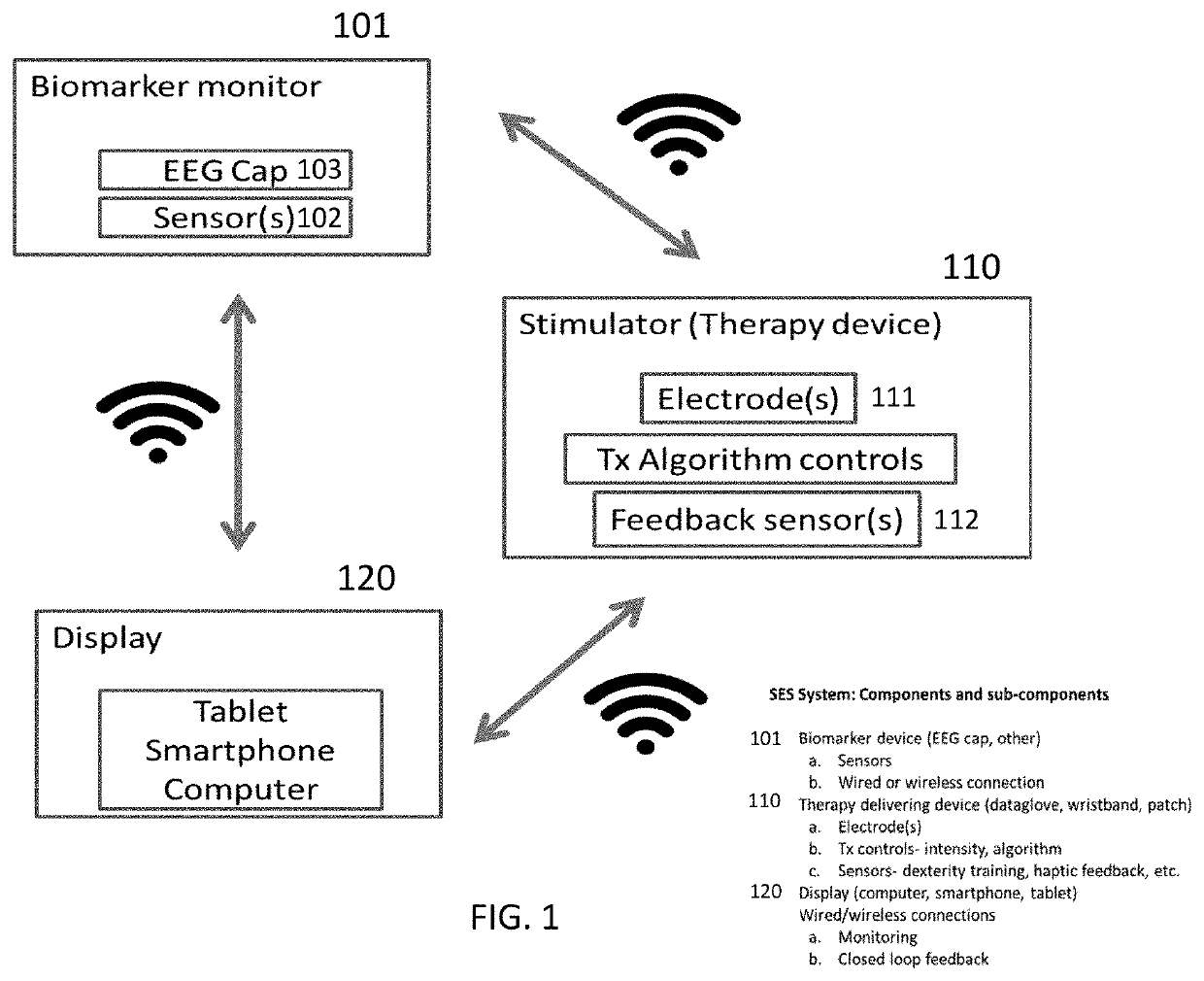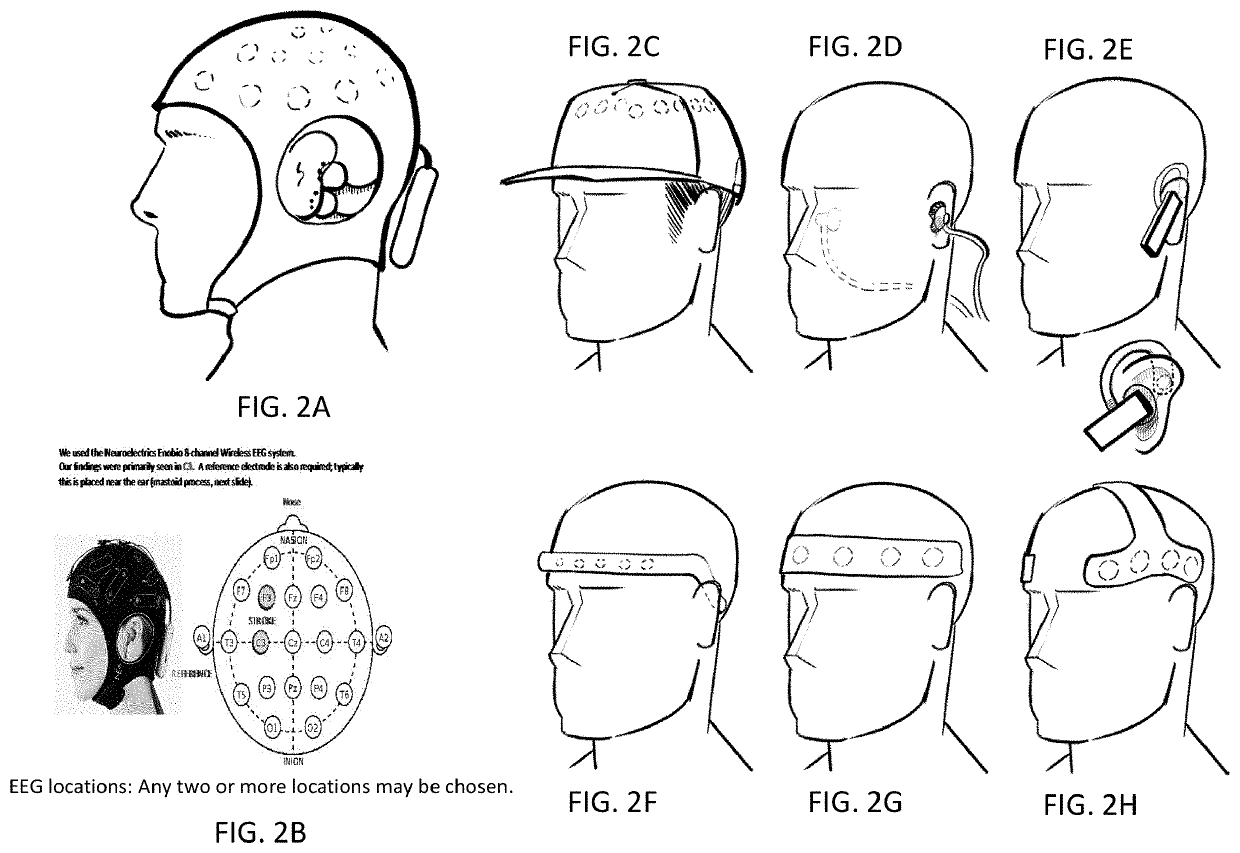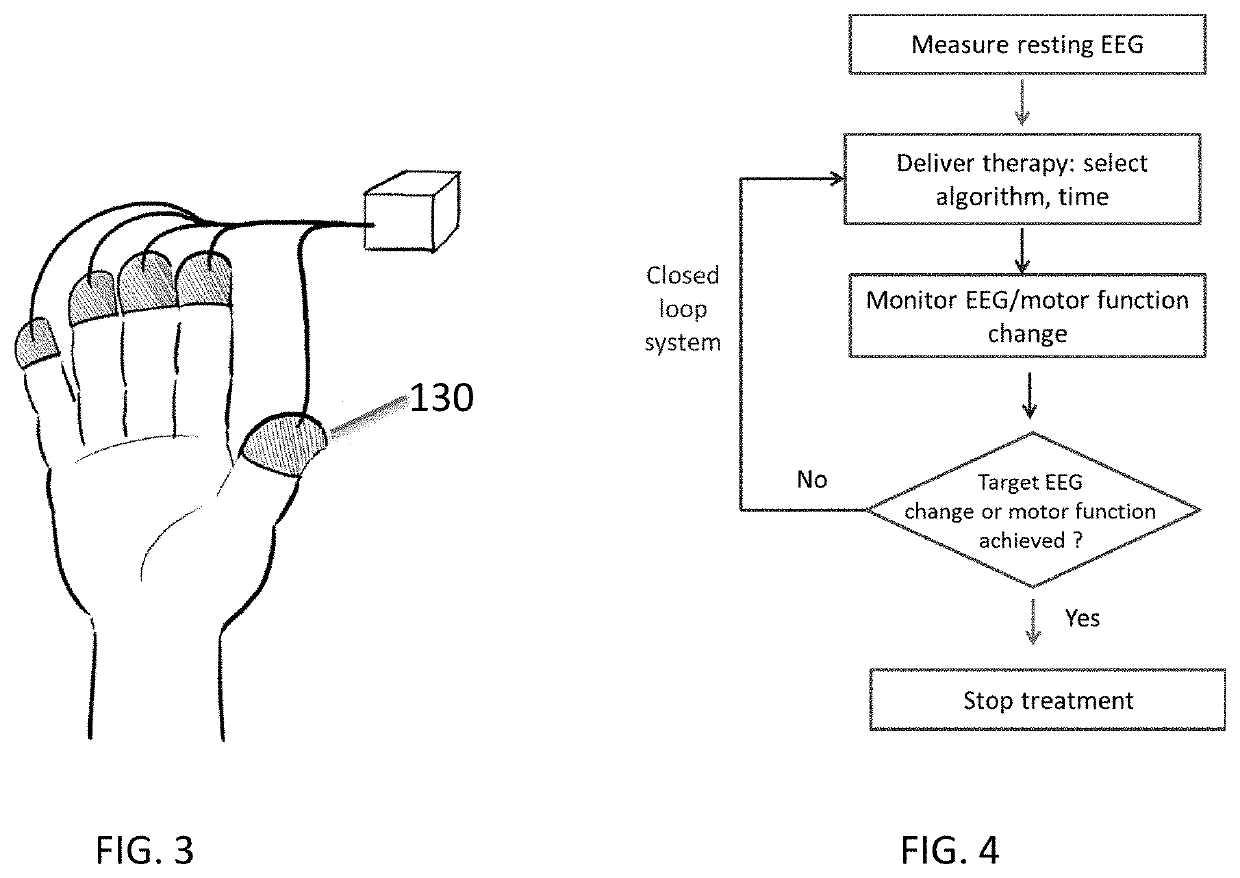Methods and Apparatuses for Improving Peripheral Nerve Function
a peripheral nerve and apparatus technology, applied in the field of electric stimulation of peripheral nerves, can solve problems that have not been adopted into clinical practice, and achieve the effect of improving performance and improving performan
- Summary
- Abstract
- Description
- Claims
- Application Information
AI Technical Summary
Benefits of technology
Problems solved by technology
Method used
Image
Examples
glove embodiment
Smart Glove Embodiment
[0087]FIG. 5 shows another exemplary embodiment of the system. In this case, a wearable dataglove 201 incorporates electrical stimulation of the three peripheral nerves of the arm, namely the radial, median and ulnar nerves. The device comprises bipolar electrodes 202 as well as vibrotactile feedback sensors 203 to provide real-time feedback regarding (EEG or motor or movement) response to SES stimulation and task-errors during dexterity training. This modular unit also has the capacity to monitor finger movements (using bend sensors 204), ability to electrically stimulate all three nerves at a range of frequencies, and be able to provide vibratory cues based on real-time monitoring of performance. This system combines an adaptive gaming environment that can be customized for each patient. Importantly, this system also has the capability to allow physicians, physical therapists and other professionals to remotely monitor each patient's rehabilitation trajectory...
embodiment
Wrist Band Embodiment
[0089]FIGS. 6A-6D and 7A-7B show other potential components of exemplary apparatuses configured as wrist bands that incorporate the various elements described above. In FIG. 6A-6D the wrist band 250 incorporates one or more electrodes 255 to individually or collectively stimulate the three peripheral nerves of the arm, namely the radial, median and ulnar nerves. The device may also comprise bipolar electrodes as well as vibrotactile feedback sensors to provide real-time feedback regarding hand or motor or movement response to SES stimulation and task-errors during dexterity training. It has the capability to electrically stimulate all three nerves, separately or collectively, using different algorithms at a range of frequencies, intensities and pulse widths to achieve desired performance. Similar embodiments may be made to stimulate the nerves in the lower extremities and other parts of the body.
[0090]The wrist band 250 is made from a stretchable elastic polymer...
patch embodiment
Electronic Patch Embodiment
[0093]FIGS. 8A-8C shows other embodiments of an exemplary device and system in the form of an electronic patch that can be placed on the surface of the body, adjacent to any peripheral nerve or nerves, and stimulate them using SES. The patch is adhesively attached to the body using biocompatible and / or bioconductive gels and other materials to send electrical signals, monitor nerve activity, assess motor function, and other human functional parameters of interest. The electronic patch comprises one or more electrodes to individually or collectively stimulate the different peripheral nerves. The patch is in wireless communication with a computer, tablet or smart phone device to control SES, obtain feedback, collect data, store and develop adaptive feedback to titrate the dose for treatment effect.
[0094]As shown in FIG. 8A, the SES device may be fabricated as reusable integrated system comprising the patch electrodes for stimulation, electronics to generate ...
PUM
 Login to View More
Login to View More Abstract
Description
Claims
Application Information
 Login to View More
Login to View More - R&D
- Intellectual Property
- Life Sciences
- Materials
- Tech Scout
- Unparalleled Data Quality
- Higher Quality Content
- 60% Fewer Hallucinations
Browse by: Latest US Patents, China's latest patents, Technical Efficacy Thesaurus, Application Domain, Technology Topic, Popular Technical Reports.
© 2025 PatSnap. All rights reserved.Legal|Privacy policy|Modern Slavery Act Transparency Statement|Sitemap|About US| Contact US: help@patsnap.com



